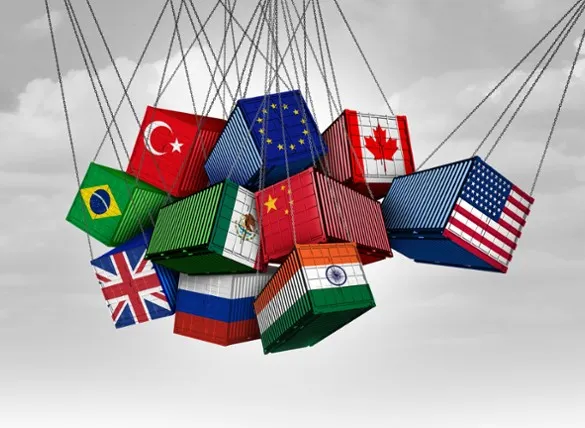Emerging Markets Strategy March Commentary
Key Takeaways
-
Infrastructure delivered positive returns in the first quarter, outpacing both global equities and U.S. equities, which were weaker amid higher policy uncertainty, specifically around tariffs.
-
Infrastructure’s defensive nature was rewarded in this environment, with regulated utilities leading returns, in particular in Europe and North America.
-
Trump’s policy agenda has so far been more disruptive than expected, and we anticipate uncertainty will weigh on U.S. growth. However, other regions such as Europe may see improving growth through a potentially constructive fiscal agenda across the region.
Market Overview
Infrastructure delivered positive returns in the first quarter, outpacing both global equities and U.S. equities, which were weaker amid higher policy uncertainty, specifically around tariffs. The AI trade, which worked well throughout 2024, continued to unwind following concerns around China’s DeepSeek AI model representing a cheaper alternative to U.S. models. Chinese equity indices significantly outperformed other major peers, which was driven by strength in the internet sector.
Infrastructure’s defensive nature was rewarded in this environment, with regulated utilities leading returns. Tariff fears have also been exacerbated by signs of slowing growth, raising recession concerns.
On a regional basis within emerging markets, China and Brazil saw recovery during the quarter. Indian and ASEAN markets weakened given the risk-off backdrop, which was driven by Trump’s trade policy uncertainties, energy price volatility around Russia-Ukraine, and USD strength against local currencies.
Portfolio Performance
The ClearBridge Emerging Markets Strategy outperformed relevant infrastructure benchmarks during the quarter, however lagged global emerging market equity indices.
On a regional basis, Latin America (+3.01%) was the top contributor for the quarter, with Brazilian electric utility Equatorial Energia (+0.72%) and Brazilian water company Sabesp (+0.64%) the lead performers.
Equatorial Energia (EQTL) is a Brazilian electric power company that distributes electricity in the Northeast states of Para and Maranhão in Brazil.
Sabesp is the largest regulated water utility company in Latin America and caters to a client base of approximately 26.7 million customers. Based in São Paulo, Sabesp was recently privatised with top-tier operators Equatorial emerging as the acquirers. Under Equatorial’s management, significant improvements in efficiency are expected.
Following months of severe weakness across Brazilian equities, Equatorial Energia and Sabesp saw a share price rebound in the quarter, as there was increased hope that President Lula would exercise more fiscal discipline.
Malaysian electric utility Tenaga (‑0.47%) and Chinese gas utility China Resources Gas (‑0.91%) were the largest detractors.
Tenaga is the largest vertically integrated electric utility in Malaysia, serving a customer base of 10.9 million customers. Tenaga’s share price fell with volatility in general Malaysian equities, although against local market weakness the company’s share price held up resiliently.
China Resources Gas is a gas distribution utility in China whose core business is downstream last-mile city gas distribution, having over 270 projects across the country. It is substantially owned by China Resources Holdings, one of the largest SOE conglomerates in China. China Resources Gas announced a profit decline in 2024 which missed market expectations.
During the quarter, we exited our positions in Chinese electric utility China Power International and Chinese toll road operator Shenzhen Expressway.
All returns are in local currency.
Positioning & Outlook
Our outlook is for slowing global growth in 2025 with some regional nuances. Trump’s policy agenda has so far been more disruptive than expected, and we anticipate uncertainty will weigh on U.S. growth. However, other regions such as Europe may see improving growth through a potentially constructive fiscal agenda across the region. Looking ahead, we expect some volatility drive by U.S. policy uncertainty, as the forward path for bond yields remain highly uncertain. Trump’s trade tariffs on other countries and retaliatory measures will likely remain topical for emerging markets this year. We believe the defensive characteristics of infrastructure will remain valuable in a potentially volatile market. Opportunities continue to be widespread across the infrastructure landscape, with utility fundamentals some of the best we have ever seen. The market is still significantly underestimating the growth in electricity demand driven by AI and data centre growth, along with a policy push for decarbonisation. Utilities with exposures to these themes look well positioned. They are also largely immune from global geopolitical uncertainties. Meanwhile, we continue to look for opportunities to add user-pay GDP sensitive infrastructure names, particularly those leveraged to the themes of consolidation, restructuring, the rising middle class or consumption stimulus. Most emerging market economies are still expanding at a healthy growth rate, significantly above their European and North American peers
Related Perspectives

Infrastructure Poised to Mostly Weather Tariff Storm
A new regime of tariffs will likely create the need for more infrastructure to support reshoring, while utilities' lack of exposure to international trade may bolster their defensiveness.
Read full article


